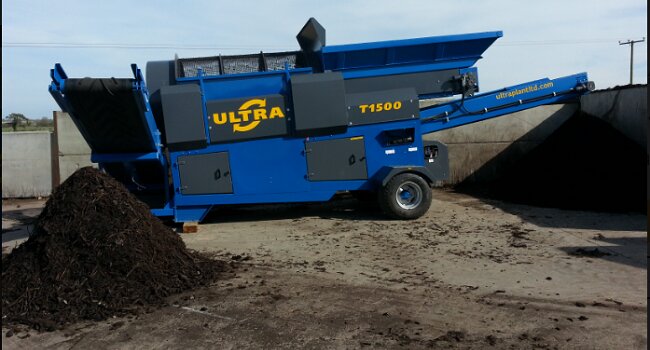As private individuals explore the world of trommel screens for personal or small-scale commercial applications, the need for a comprehensive understanding of these versatile devices becomes paramount. Trommel screens, with their drum-shaped design and perforated openings, offer an effective solution for various tasks, from soil screening to waste sorting. This article delves deeper into the considerations, features, and potential applications that helps for professionnal purchase of a trommel screen.
Understanding Trommel Screens
Trommel screens operate on the principle of rotating cylindrical drums, equipped with perforated surfaces that allow for the separation of materials based on size. The versatility of these screens makes them indispensable for tasks such as composting, waste management, and material separation. Private individuals must grasp the nuances of trommel screens to make a purchase that aligns with their specific requirements.
Key Considerations for Professional Purchase:
Size and Capacity:
Assess the anticipated volume of materials to be processed regularly.
Choose a trommel screen with a drum size and capacity that can handle the expected workload efficiently.
Screen Design and Material:
Understand the composition of materials to be processed (e.g., soil, construction debris, or compost) to select the most suitable screen design (woven wire, punch plate, or mesh).
Prioritize durable materials for screens to ensure longevity and minimal wear over time.
Power Source:
Evaluate the availability of power sources at the intended operational site.
Decide between electric, hydraulic, or diesel-powered trommel screens based on the site’s infrastructure and environmental considerations.
Mobility and Portability:
Consider the need for mobility, especially for those with varying operational locations.
Choose between stationary and mobile trommel screens, with portable options facilitating easy movement between different sites.
Ease of Maintenance:
Examine the trommel screen’s maintenance features, such as accessibility for drum and screen changes.Opt for models with user-friendly control systems to streamline routine maintenance tasks.
Cost and Budget:
Establish a comprehensive budget, factoring in not only the initial purchase cost but also potential operational expenses.Balance cost considerations with the long-term benefits and efficiency gains offered by the selected trommel screen.
Applications of Trommel Screens for Private Individuals:

Gardening and Landscaping:
Utilize trommel screens for efficient soil screening and separation, enhancing the quality of soil for gardening and landscaping projects.
Waste Sorting and Recycling:
Contribute to sustainable waste management by effectively separating recyclables from general waste using trommel screens.
Construction and Demolition Waste:
Process construction debris to recover valuable materials, minimizing waste and contributing to environmentally conscious practices.
Composting:
Accelerate the composting process by employing trommel screens to efficiently screen and separate compost materials.
How Does a trammel Screen work?
Trommel screens are versatile machines designed for sorting and classifying materials based on their size. They consist of a cylindrical drum that rotates on an axis, and the drum is usually inclined at a certain angle. The basic working principle involves the rotation of the drum and the use of different-sized openings in the drum to separate materials. Here’s a step-by-step breakdown of how these machines work:
Feeding Material:
Raw material is fed into the trommel screen, often through a hopper or conveyor belt. The material may vary widely, including soil, compost, construction debris, or other substances that need to be sorted.
Rotating Drum:
The heart of the trommel screen is its cylindrical drum, which rotates on its axis. The rotation can be powered by various means, such as electric motors, hydraulic systems, or diesel engines.
Inclined Angle:
The drum is typically set at an inclined angle, allowing the material to move from the higher end to the lower end as the drum rotates. This inclination aids in the screening process, facilitating the separation of materials based on size.
Screen Openings:
The drum is equipped with perforations or mesh of various sizes. These openings allow smaller particles to pass through while larger materials are retained within the drum. The size of the openings determines the size of the separated particles.
Material Separation:
As the drum rotates, the material inside tumbles and rolls. Smaller particles that fit through the openings fall through the drum, effectively being separated from the larger materials.
Conveyor System:
In some trommel screens, there is an additional conveyor system that carries the separated materials away from the drum. This conveyor can transport the material to different collection points or additional processing stages.
Adjustable Settings:
Some advanced trommel screens come with adjustable settings, allowing operators to modify drum speed, incline angle, or screen size. This adaptability is particularly useful when dealing with different types of materials that may require specific processing conditions.
Collection and Disposal:
The separated materials are collected based on their size and intended use. For example, in recycling applications, different materials like plastics, metals, and paper may be collected separately for further processing or disposal.
Conclusion:
In the realm of trommel screens, private individuals can unlock a world of efficiency and productivity. By delving into the intricacies of size, capacity, power source, and application-specific features, individuals can confidently navigate the market and make informed decisions. This comprehensive guide serves as a valuable resource, ensuring that the purchase of a trommel screen becomes a strategic investment tailored to meet the unique needs of private individuals in diverse applications.




























